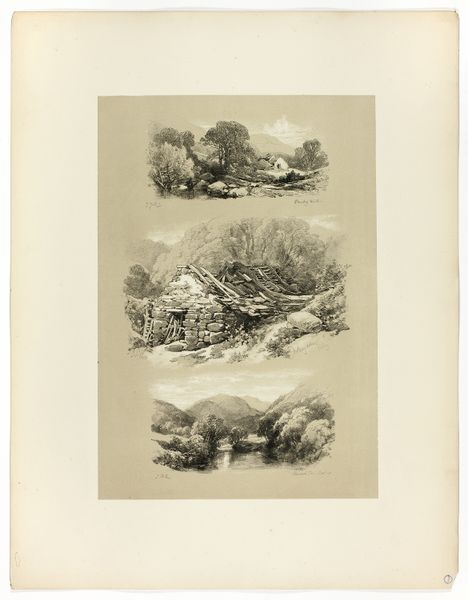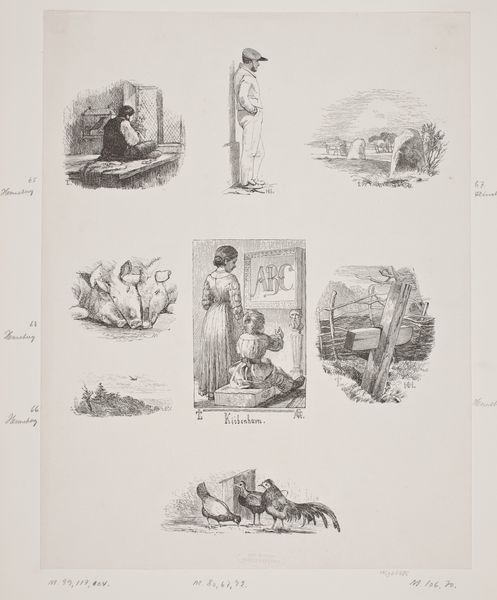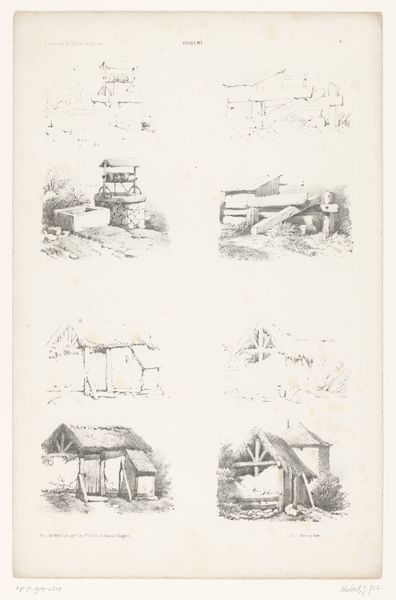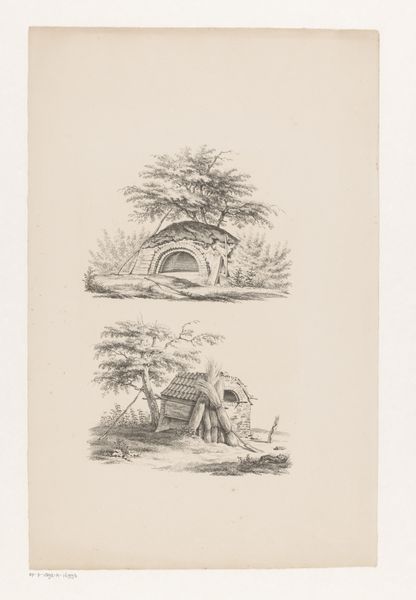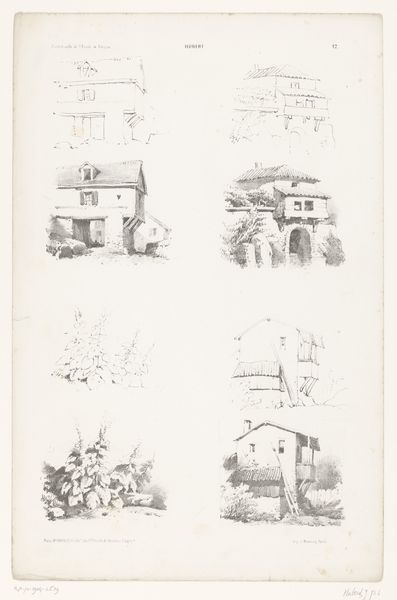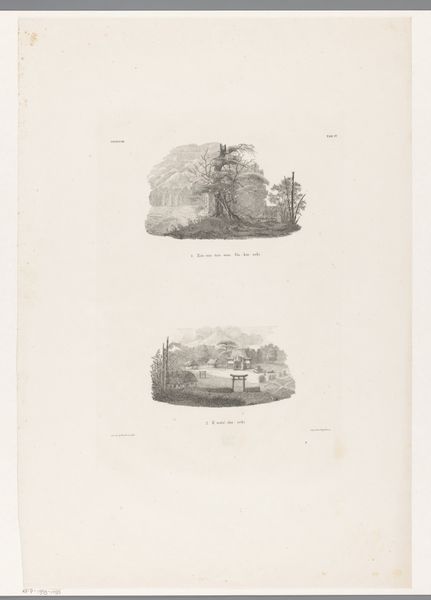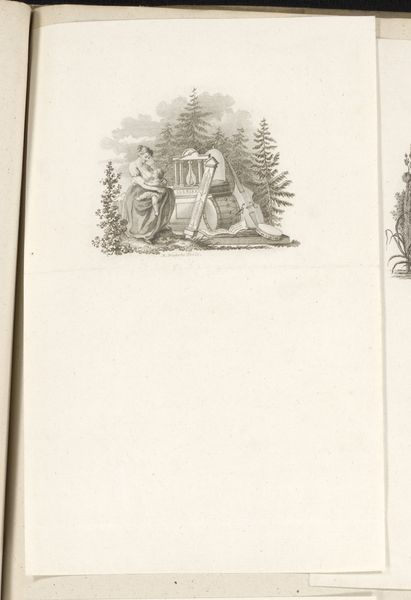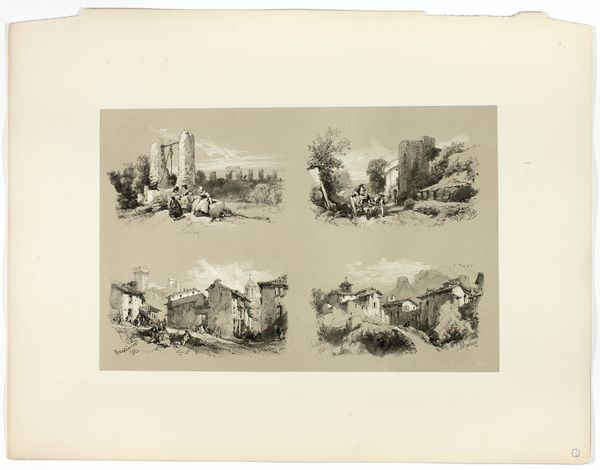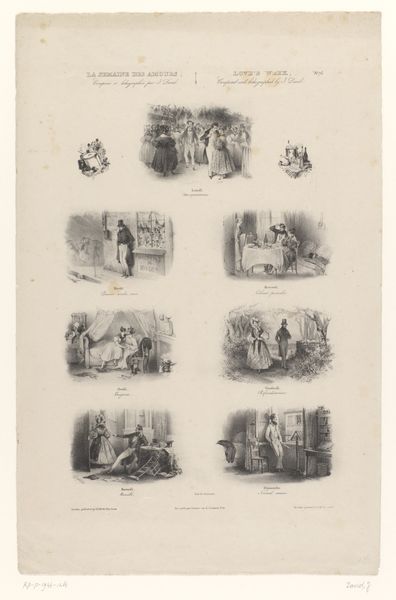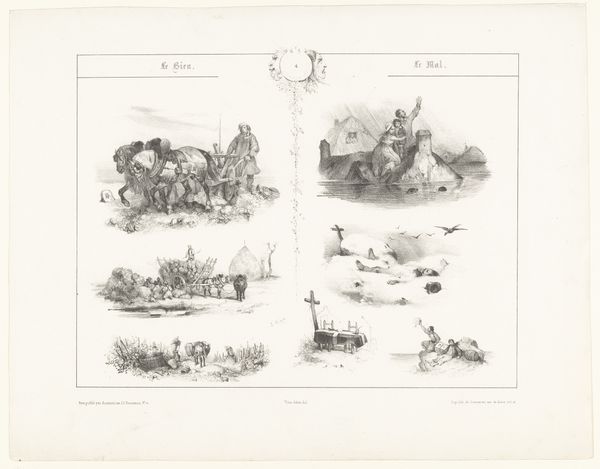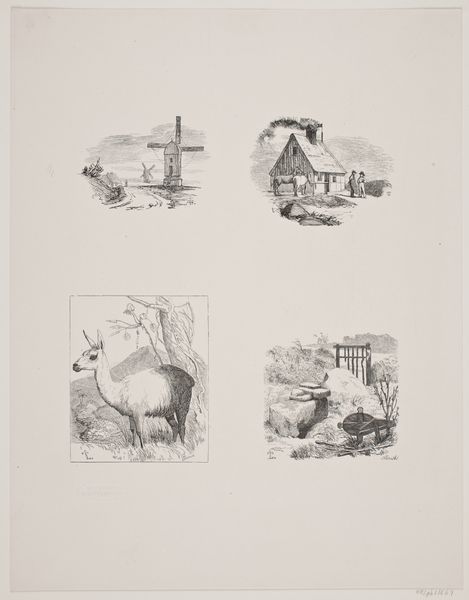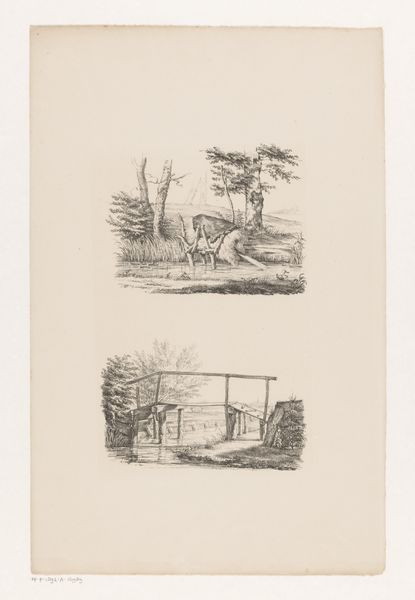
Vier voorstellingen met bomen en huizen in twee tekenstappen 1853 - 1854
0:00
0:00
Dimensions: height 492 mm, width 320 mm
Copyright: Rijks Museum: Open Domain
Curator: Before us, we have "Vier voorstellingen met bomen en huizen in twee tekenstappen", or "Four Views with Trees and Houses in Two Drawing Steps," an etching, printed around 1853-1854. The artist is Jean Baptiste Louis Hubert, and it’s part of the Rijksmuseum collection. Editor: There’s something immediately appealing about the light in these little sketches. It's almost like they capture different times of the day or even different seasons with just simple pencil and etching techniques. Curator: The title gives us a clue. Consider the historical context, this was printed for artistic study, pedagogical methods to quickly render a landscape; consider that it served to help many people learning art that was inaccessible during its time due to high costs. This intersects a complex interplay between class, accessibility, and labor that remains highly pertinent to contemporary society. Editor: And you can see it in the efficient lines of the etching. Each little scene uses a kind of shorthand—almost mass-produced—to show how a scene might be put together, built up. Like layers of labor going into creating these picturesque places, then reproduced cheaply, in bulk. Curator: Exactly. Think about how access to landscapes like these would have been incredibly limited for many. Hubert's print brings these views, idealized as they may be, to a wider audience and can engage those not afforded opportunities to leave the industrial environment. In what way did social barriers impact one’s mental state? This has wide societal implications. Editor: It definitely flattens that access in a material sense. Everyone can hold the print, copy the strokes. I mean, consider the sheer practicality, the material cost. These methods also show artistic styles can also be commodified. This connects the art world and material practices—linking technique with mass culture through relatively cheap and easily replicated landscape imageries. Curator: The artwork as a material study provides insight into both technique, democratization, as well as accessibility, a social leveling that resonates today within contemporary social justice issues. Editor: For me, it is precisely this material accessibility married with its method to efficiently document landscape that makes the work fascinating, a reflection not just on place but the process by which those places become known and circulated in popular consciousness.
Comments
No comments
Be the first to comment and join the conversation on the ultimate creative platform.
